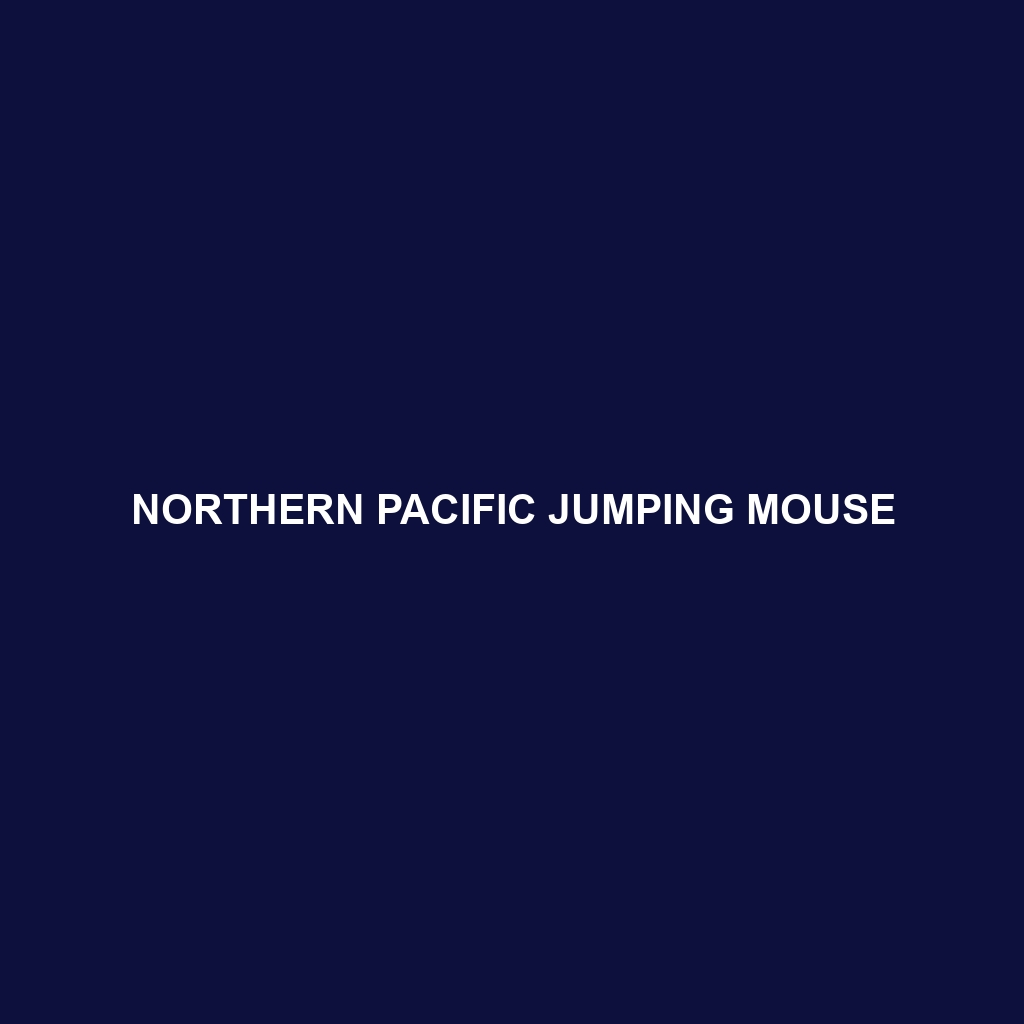Northern Pacific Jumping Mouse
Common Name: Northern Pacific Jumping Mouse
Scientific Name: Zapus altilis
Habitat: The Northern Pacific Jumping Mouse primarily inhabits humid grasslands, brushy meadows, and forested areas across the northwestern United States and southwestern Canada. This species is often found in habitats near water sources such as streams and wetlands, where moist soil conditions support the growth of essential vegetation.
Physical Characteristics: This small mammal typically measures between 7-10 inches long, with a notable tail length up to 8-9 inches. Its fur is generally light brown to yellowish with a distinctive white underbelly. The Northern Pacific Jumping Mouse features large, rounded ears and long, powerful hind legs that allow it to make impressive leaps, which is a key characteristic of its behavior.
Behavior: The Northern Pacific Jumping Mouse is primarily nocturnal, showcasing remarkable agility and speed when moving through its environment. It is known for its characteristic hopping gait, often using its powerful hind legs for quick escapes from predators. During the summer months, these rodents are highly active, storing food for the winter in burrows or grassy nests.
Diet: This species primarily feeds on a varied diet consisting of seeds, insects, and roots. The Northern Pacific Jumping Mouse is known to forage for food during the night, actively seeking out nutritious plant material to support its energetic lifestyle. In particular, they are attracted to the seeds of various grasses and will frequently consume caterpillars and other small insects.
Reproduction: The Northern Pacific Jumping Mouse has a short breeding season that usually occurs in early summer. After a gestation period of approximately 23-28 days, females give birth to a litter of 3-7 young. The young are born hairless and are dependent on their mother for several weeks before becoming independent.
Conservation Status: The Northern Pacific Jumping Mouse is currently listed as vulnerable due to habitat loss and degradation caused by agricultural expansion and urban development. Conservation efforts are focused on protecting its natural habitats and monitoring population dynamics.
Interesting Facts: One fascinating aspect of the Northern Pacific Jumping Mouse is its ability to store fat in its tail, which serves as an energy reserve during the long winter months when food is scarce. Additionally, its remarkable jumping ability enables it to evade many ground-based predators effectively.
Role in Ecosystem: As a herbivore, the Northern Pacific Jumping Mouse plays a crucial role in seed dispersal and contributes to the health of its ecosystem. It serves as a prey species for a variety of predators, helping to maintain the balance of the food web. Furthermore, its digging activities aid in soil aeration, promoting plant growth in its habitat.

